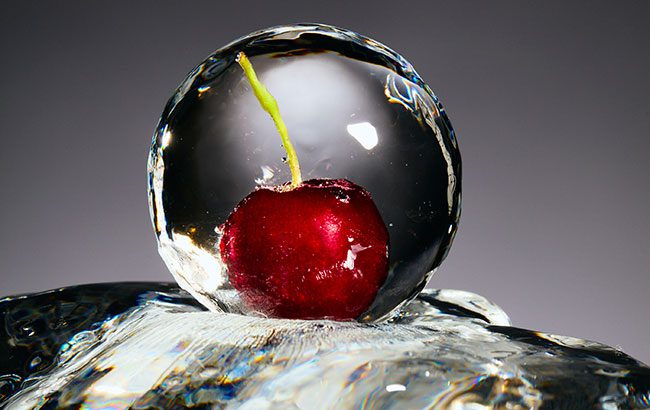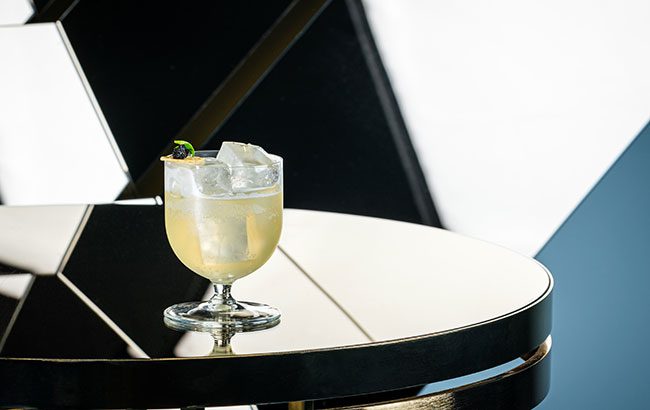On-trade recovery: let’s talk about ice
By Lauren EadsIce is one of the most important factors in a cocktail, but where does the expense of high-quality ice fit into the on-trade’s recovery?

*This cocktail feature was originally published in the March 2022 edition of The Spirits Business magazine.
Understated yet extraordinarily important, ice is an essential ingredient in most cocktails that are shaken, stirred, blended or strained. But whether it’s cubed, shaved, crushed or blocked, clear ice is the pinnacle, and has become the standard at high-end cocktail bars in London, Singapore and New York. But beautifully clear ice carved to fit your glassware comes at a cost, around 80p to £1.50 (US$1-US$2) per cube. With bars still in recovery from the financial hit they took during the pandemic, is it still an investment worth making?
Clear ice is aesthetically and technically superior to ‘standard’ ice, with water impurities and air pockets causing cloudiness. It’s also denser, so melts more slowly than a cloudy cube. But it requires professional machines, such as Clinebell or Hoshizaki, and is often carved by specialist suppliers. These machines use a combination of motion and distilled or reverse-osmosis water to ensure crystal-clear cubes with a purer taste.
“It’s rare these days that you would order an Old Fashioned or Negroni and it doesn’t come served on a beautiful large block of clear ice,” says Jesse Vida, head bartender at Atlas in Singapore. “It’s about simplicity. It doesn’t need to be over thought. It just needs to be done right.”
When it comes to ice, bars have a choice: make their own by investing in a commercial ice machine, or order from a supplier. The team at Lyaness, in London’s Southbank, use their own Hoshizaki ice machines, which can produce high volumes of clear ice cubes in various sizes and shapes. A small machine starts at around £2,500, says head bartender Will Meredith. “Getting good-quality ice is always going to be an investment, whichever way you look at it, but it is such an important ingredient, and ultimately it will elevate the drinking experience.
Most venues order ice from a specialist supplier. The Edinburgh Ice Co supplies clear ice made from triple-distilled Scottish water, carved to fit a bar’s glassware. “Producing the right ice is hard,” explains owner Rhys Thomas. “It takes a lot of time, and, most importantly, you need the right water source. Most bars do not have either the time or the space to produce their own ice, and access to soft, non-recycled, fresh water with a low mineral content is even more unachievable.”
Monica Berg, acclaimed bartender and co-owner of London’s Tayēr + Elementary, which she opened with her partner, Alex Kratena, in 2019, uses two types of ice for serving: block and spear (rectangular), ordered from a long-standing supplier. “If we were to make it in house we would have to sacrifice so much of our guest space that it wouldn’t be financially viable,” she says. “We buy it in, so the ice becomes a cost rather than an overhead.”
Made-to-measure ice blocks
St James Bar at the Sofitel in Waterloo serves its signature cocktails on made-to-measure clear ice blocks. “We buy pre-cut blocks of ice made with the latest technologies and filtered water to achieve maximum clarity and transparency, and to add extra flair to a cocktail,” says head bartender Angelo Sparvoli, whose new cocktail menu uses molecular techniques such as spherification and carbonation, and incorporates diverse themes of impressionism, symbolism, Iron Man comics and Elton John. “In doing so, we guarantee the maximum freshness and quality of the final product,” he adds.
The key to good ice is ensuring a perfect equilibrium between temperature, surface-to-liquid ratio and rate of dilution to retain the balance of flavours for longer. If the ice melts too quickly a drink will become over-diluted and weak. Three ice cubes will dilute faster than 10, as they will spend more energy chilling a drink. So, when it comes to ice, more really is more, says Berg. “The more ice you use the less it will dilute the drink.
A lot of guests say they don’t want an over diluted drink so use less ice. That’s the opposite of what’s going to happen.”
As for which ice to use for particular drinks, Meredith says: crushed or shaved ice suits drinks like Mojitos, Caipirinhas or Mint Juleps – very cold, fresh drinks. Block ice (large cubes) is for sipping drinks, such as Old Fashioneds or Negronis. Cubes are for drinks that require shaking or stirring.

What about hand-chiseled ice, carved by a bartender? At around £30 for a 25kg block it can work out cheaper than pre-cut cubes. It’s a spectacle, but is it practical for a busy bar? Berg and Meredith think not. “Carving from a block is more of a journey back to how our ice was previously made or sourced,” says Meredith. “It’s also incredibly inefficient, as you spend hours carving and cracking into a big block, getting your hands all over the ice and generally making a mess.”
Berg once worked at the Ice Hotel in Sweden, so has first-hand knowledge of ice sculpting. “Ice is so solid and massive as a material, but it’s also fragile and vulnerable,” she says. “If you don’t know how to carve ice properly or take the time to learn then there’s no point. It would take a full time employee just to carve the ice, and there’s a lot of wastage. It’s more efficient to buy the size and shapes that you want.”
Thankfully, the price of ice has remained stable during the pandemic, both in London and Singapore, with Vida noting that it “wouldn’t be very well received to hike prices when F&B [food and beverage] has been struggling so much through lockdowns and capacity restrictions”.
Meanwhile, Thomas has maintained prices at the same level as when The Edinburgh Ice Co was founded eight years ago. “We are doing everything we can to keep it that way,” he assures. “The venues and brands that use us are more concerned about the quality of the product they are serving to the customer, and not looking to cut costs by using lower-end products.”
Growing demand for high-quality ice
Far from being pushed down the pecking order amid recovery, high-quality ice is more coveted than ever, with demand growing despite the financial challenges of the past two years. “We have found that venues, restaurants and bars that would never have considered ice an important factor in service are now raising their game by using our ice,” adds Thomas.
Increasing demand could result in more competition among suppliers, and continued inflationary pressures are a constant threat to pricing. But what’s crystal clear is that ice is an investment always worth making. As Berg says: “It’s the cheapest ingredient, but it’s the difference between drinks at home and drinks in a bar.”
Related news
Jigger & Pony reveals Pop City menu
